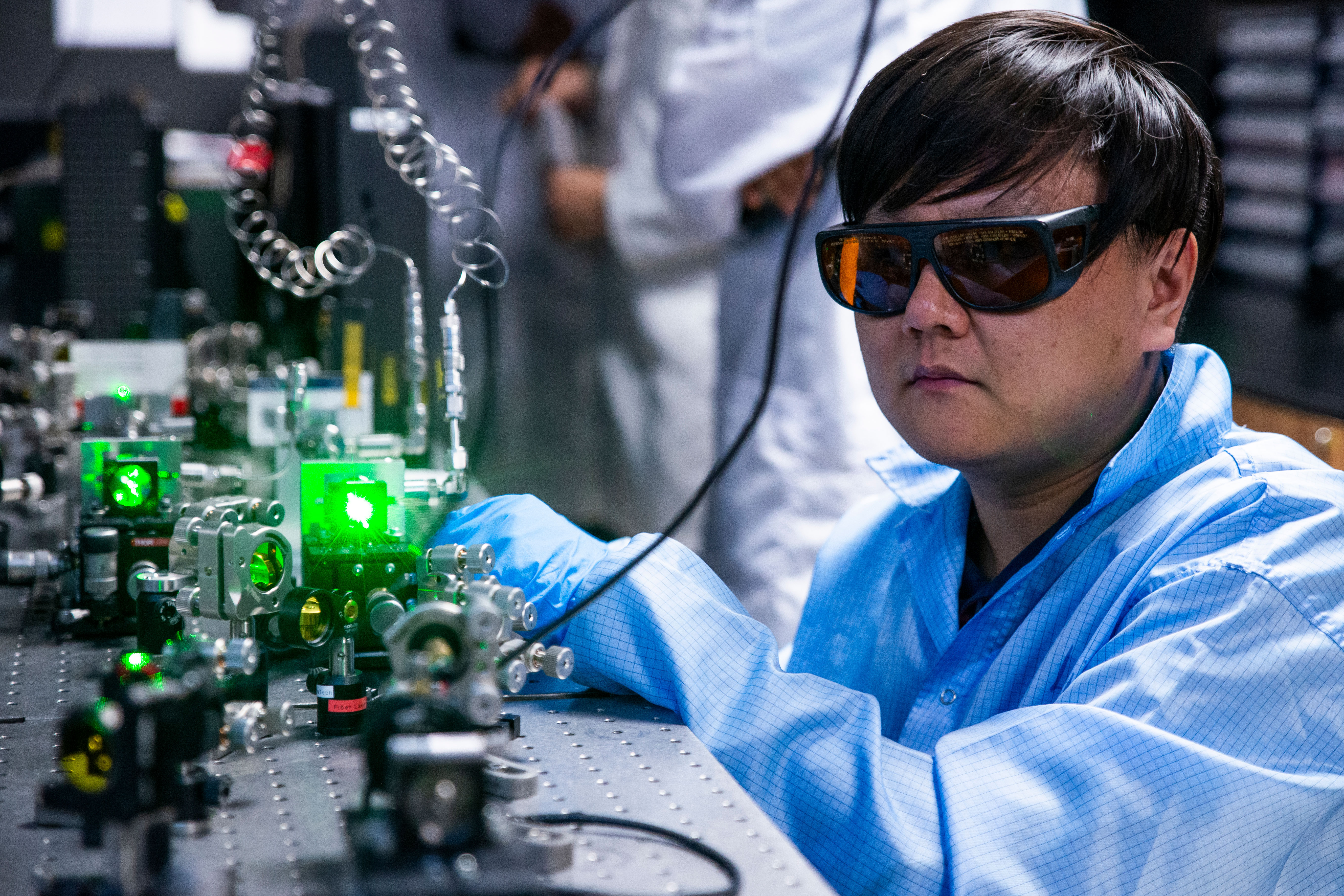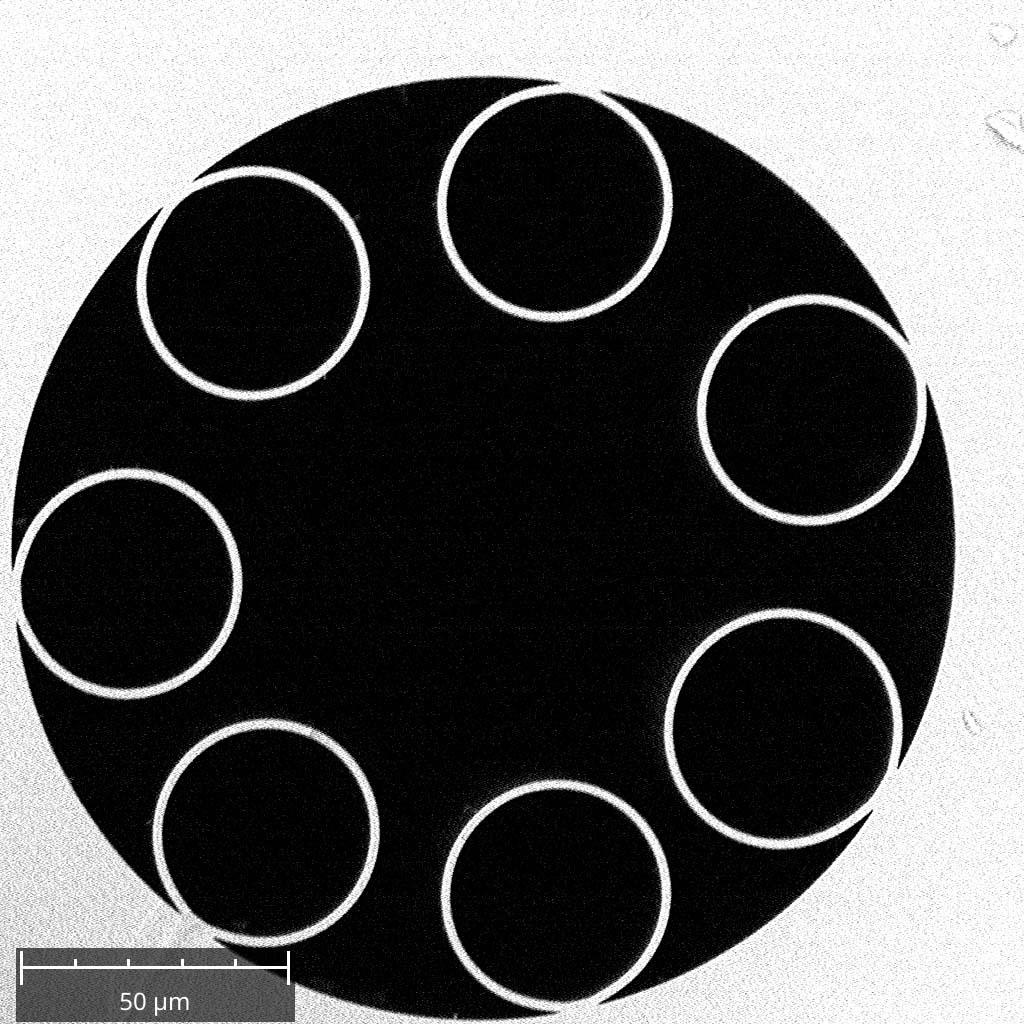Deng Ang, Nanyang Technological University, Singapore calibrating the optical equipment in an experimental setup used to generate intense and ultrafast mid-infrared lasers. [Image: NTU Singapore]
The field of mid-infrared (mid-IR) photonics has expanded significantly in the last few decades, driven by multiple applications in molecular detection, biomedicine, remote sensing, telecommunications and other areas. However, there is notably a lack of compact, robust and powerful ultrafast sources in the mid-IR region, which hinders the progress of the field.
Now, researchers based in Singapore and Australia have reportedly demonstrated a fiber-based ultrafast mid-IR light source that produces record-breaking microjoule-level femtosecond pulses (Laser Photonics Rev., doi: 10.1002/lpor.202200882). The new approach leverages the band-edge effect, which exploits the effect of structural resonances in antiresonant hollow-core fibers.
Hollow cores for higher intensity
The mid-IR region of the electromagnetic spectrum, particularly from 3 to 12 µm, contains many absorption bands of molecular solids, liquids and gases. A high photon flux mid-IR supercontinuum source, driven by highly concentrated mid-IR photons, could be used to identify the “fingerprints” of various molecules in a single measurement with extremely high sensitivity.
A scanning electron microscope photo of the cross-section of a hollow-core fiber used in NTU Singapore’s mid-infrared laser experiments. A ring of seven smaller tubes can be seen along the inner wall of the fiber. [Image: NTU Singapore]
Wonkeun Chang, who specializes in ultrafast light–matter interactions, and his colleagues realized that recent advances in hollow-core fiber technology could address the gap in intense, ultrafast mid-IR sources.
“Our mid-IR femtosecond pulse generation method works by making use of the guiding properties of antiresonant hollow-core fibers,” said study author Chang, Nanyang Technological University, Singapore. “Antiresonant hollow-core fibers have been attracting a lot of interest in the last decade due to their ability to guide light in their hollow cores with exceptionally low transmission loss.”
While others have used solid-core optical fibers to generate ultrashort mid-IR pulses, the new approach with hollow-core fibers produces much more intense pulses. It successfully generated femtosecond pulses centered at 3.16 µm wavelength with a pulse energy of more than 1 µJ— about 1,000 times more powerful than those produced by existing solid-core fiber methods.
Tweaking microstructures
Using computer simulations, Chang discovered that the wall thickness of the glass tubes surrounding the fiber’s hollow core plays a key role in determining its light-guiding characteristics. By tinkering with the fiber’s microstructures, he found it was possible to precisely control the emission wavelengths and induce a conversion of near-infrared laser pulses to the mid-IR region with high efficiency.
In the end, the researchers produced record-breaking microjoule-level femtosecond pulses that emerge from an argon-filled antiresonant hollow-core fiber pumped at 2 µm with a conversion efficiency as high as 8.2%. Next, they hope to push the mid-IR pulses to a longer wavelength region by adjusting the fiber’s cross-sectional geometry, as well as to substantially enhance the laser conversion efficiency.
“Our fiber-based platform makes it ideal to be used in outdoor environments,” said Chang. “It can be used, for example, to detect the presence of harmful gases and chemicals, as well as to noninvasively monitor the health of a person by analyzing his exhaled breath.”


